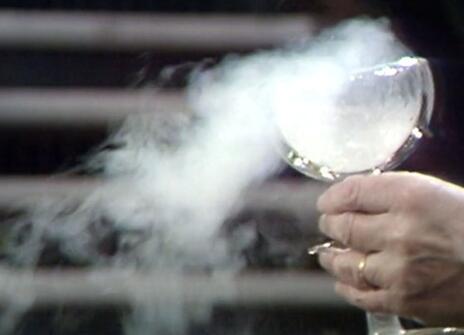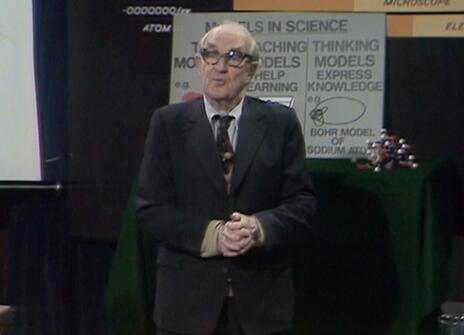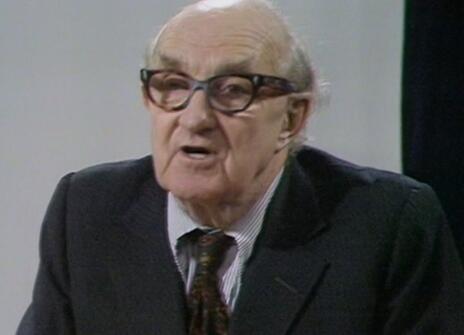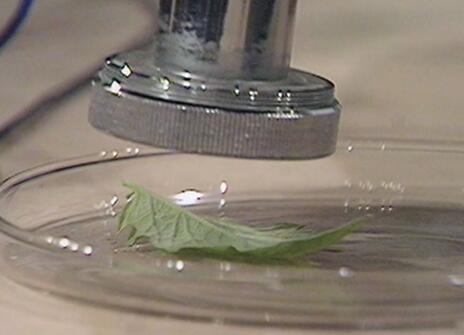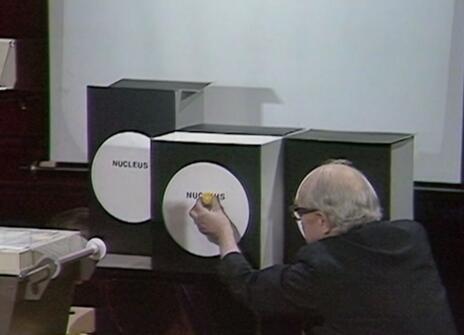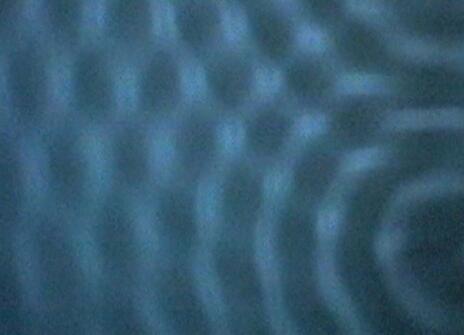Lecture 6 – Seeing atoms at last
From the 1979 lecture programme:
We can say some more about nuclear power stations. Fission provides a huge output of heat that is used to boil water and, make steam to run the electric generators of a power station.
Keeping in mind the proper meaning of radioactive decay with half-life after half-life after half-life… we can comment sensibly on precautions and safety. Neutrons cause fission easily in the rarer kind of uranium (U-235, less than 1% of all uranium from rocks). The more common isotope (U-238) usually grabs a neutron without fission and, in two stages of radioactivity, becomes plutonium, a new element, man-made, which can also make a fission chain reaction.
Breeder reactors make rich use of that and put out more fissionable atoms than they take in. See the great graph which shows the possibilities: only the heaviest atoms can yield useful energy by fission; but at the other extreme the lightest elements could yield energy by fusion – nuclei of hydrogen lithium etc. forced together to join and make helium.
A steady fusion chain reaction for power stations has yet to be achieved, but it is the hope of the future: fusion energy for our great-great-great-grandchildren – in addition to sunshine, which is also produced by nuclear fusion in the Sun's ultra-hot core.
A gang of lasers offers a promising avenue to the necessary high temperature. We cannot show such a gang in action, but we will show a small laser demonstrating its 'bite'.
In an earlier lecture, you saw light making double-talk: it is a storm of waves or a shower of bullets – it switches between those two behaviours according to the questions we ask or the measurements we try to make. Now see that solid bullets of matter also give double-talk.
High-speed electrons, which certainly behave as bullets, can also show wave properties – if we ask them. Shoot a stream of electrons through a thin crystal of carbon and we see a pattern formed on the receiving screen. Compare that with the pattern made by X-rays shot through a crystal or visible light shot through the woven cloth. The higher the voltage used in the electron gun, the faster the electrons and the smaller the pattern, the shorter the electrons' wavelength.
Larger things, neutrons, nuclei, even atoms, can show wave patterns like that. With still larger bullets the wavelength is utterly too short to make a noticeable pattern, but for all we know it is still there.
In Lecture V we sketched a nuclear atom model and poured some doubts on it. Now we can make a better model, better because it fits with more experimental knowledge and better because it is more fruitful – it makes more successful predictions. The new model has a tiny massive nucleus with a positive electric charge, just as before – until we try to look inside that nucleus; then we may find waves there also. But the electrons are busy with double-talk. They carry momentum like bullets still – if we ask them – but they no longer have the sharp clear orbits beloved of the storybooks. Instead, a wave pattern tells, of each electron, where it is more likely or less likely to go – like the bright and dark regions in the pattern shown with electrons and carbon crystals.
Are those controlling and predicting waves real? We had better just call them thinking models. We prefer to let mathematicians turn them into wave formulae for prediction. Even a formula can be a good thinking model in the most international of all languages.
There is more to be said about models. They are our way of describing what we have found out about Nature. In the realm of atoms, they are useful pictures for talk, for clever thinking and understanding. But we hope you will not ask "Are they true ?" because in making them we have had to use the words for big things that we can touch or see.
If we say a hydrogen nucleus is a round ball, we only mean symmetrical like a ball. As a warning, we hope to show you a crazy room, built distorted. As you look in through a peephole, you would rather believe it is an ordinary rectangular shape, although you have to swallow some surprising events that you see in it. It is a reminder of the way we attach new unfamiliar knowledge to old familiar things that we already know.
And yet you have our promise from Lecture I: You shall see atoms. You shall see the atoms of the sharp point of a tungsten needle – now that you are prepared to understand the method. It is indirect, yet we hope, now in conclusion, that you will each be able to boast I have seen atoms.
About the 1979 CHRISTMAS LECTURES
From the 1979 lecture programme:
We build our scientific knowledge by doing experiments, by asking questions of Nature and sorting out the answers that Nature gives us. The sorting-out often involves reasoning and imagination; but without trying experiments to see what does happen we should just be guessing in the dark.
The earliest scientists, who helped our ancestors long ago to make a calendar, to navigate, and to measure and build, gathered some knowledge by watching what does happen. Nature was offering experimental knowledge all round them; and they observed and extracted general knowledge and used it. That was knowledge of man-sized things: a hand mirror to reflect rays of sunlight; the star patterns seen at night reduced to a sketch; a seesaw to balance children —leading to weighing machines; a bridge across a stream, leading to knowledge of forces; measurements for a building only a few men high; a survey of a mountain that men could climb.
Such gathering and use of scientific knowledge dates from thousands of years ago, perhaps even a million or so. That was experimental knowledge, though it was sometimes mixed with guessing or even wild imagining. But when men tried to describe the fire of the stars far out of reach, or to imagine outrageously small moving atoms in all matter, they were indeed guessing in the dark about things far above or below the scale of man-sized things.
Some early scientists did make interesting guesses about atoms, yet these were only guesses. These were clever philosophy if you like, but there were no experiments to support them.
Except for clever suggestions, our knowledge of atoms is very young compared with our older scientific knowledge. Some of it is a few centuries old but much of it is only one century old at most. There are two reasons for that late development. First: since atoms are (as we now know) far too small to be seen, all our experimental gathering of knowledge has to be indirect. Although we now know a great deal about atoms, and about the still smaller parts of atoms, we still have to describe them by imaginative pictures which we call models.
Second: even to build such knowledge indirectly, new apparatus had to be developed, such as vacuum pumps and electronic supplies for high voltage. The aid of a vast new technology was needed.
Nowadays when one learns what has been discovered about atoms one has to learn by hearsay, one has to accept the indirect methods and swallow the picturing by imaginative models. Then a keen listener must long for some experimental support or illustrations. That is what these lectures will offer in their 'circus of experiments'. The circus cannot cover all our new knowledge of atoms but it will, we trust, give visitors a feeling of friendly first-hand acquaintance, a contribution of confidence and understanding as well as a delight in seeing experiments.
